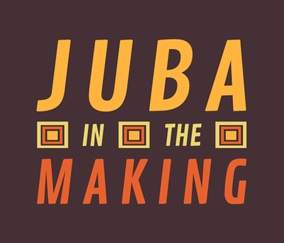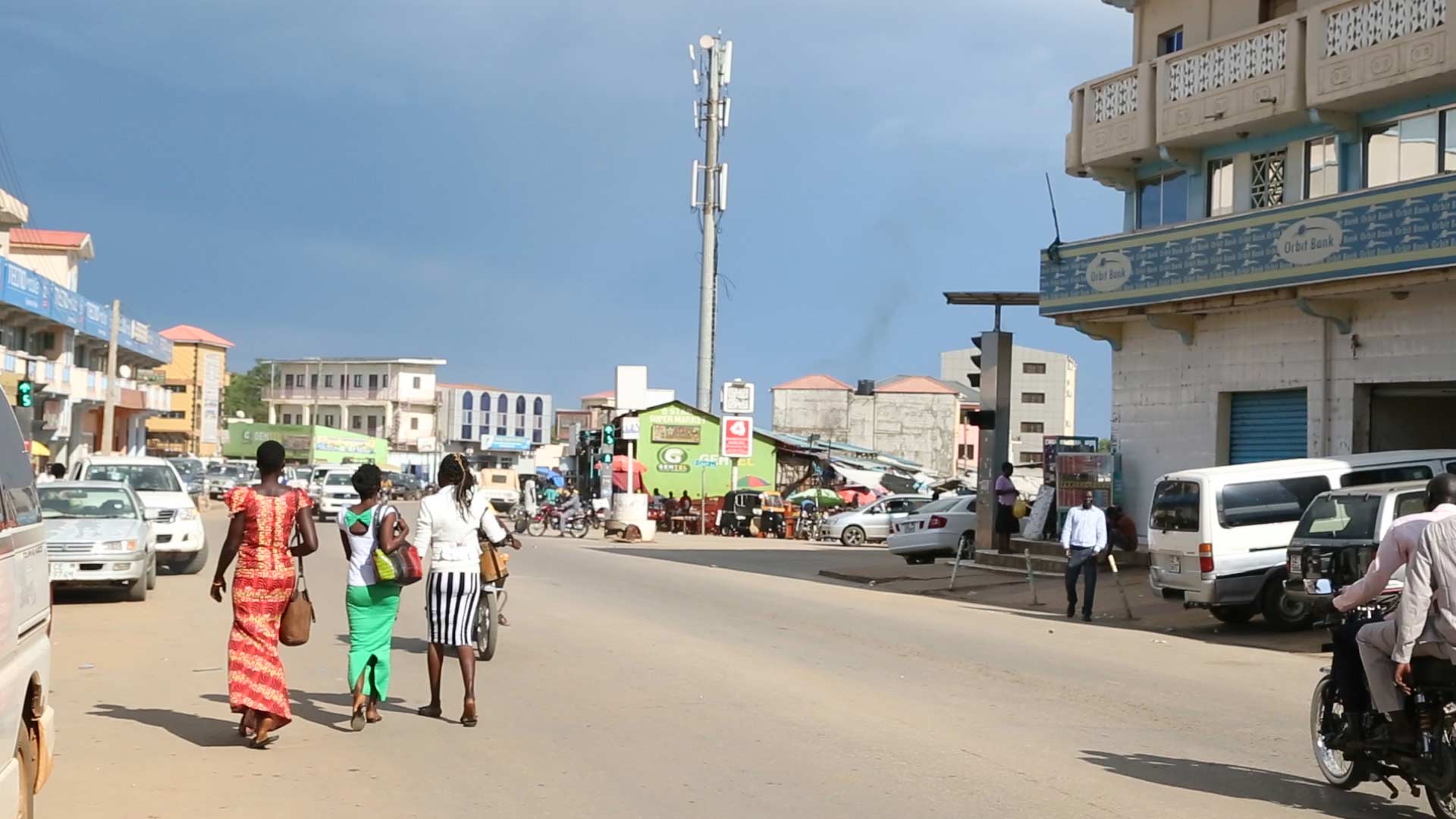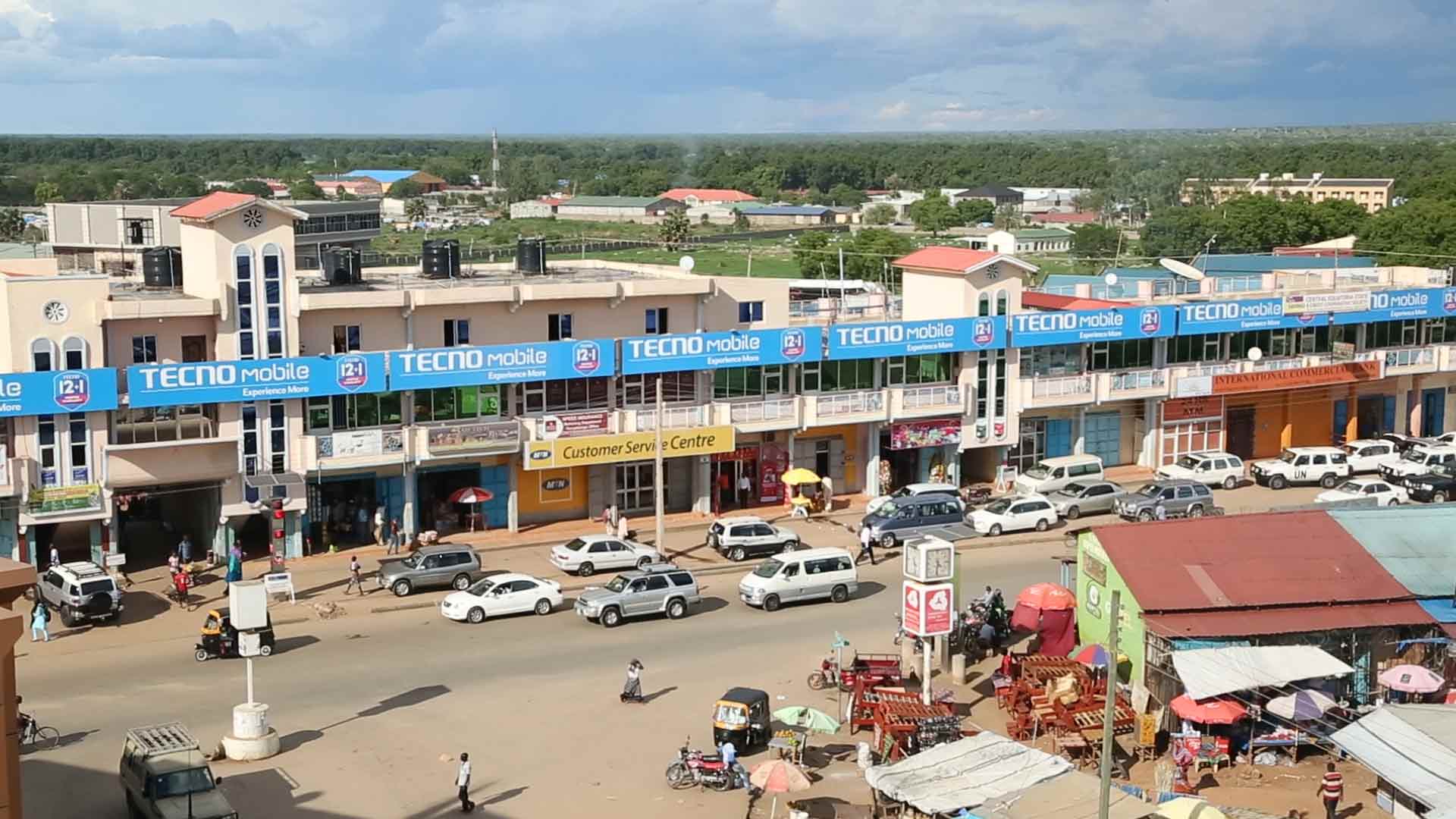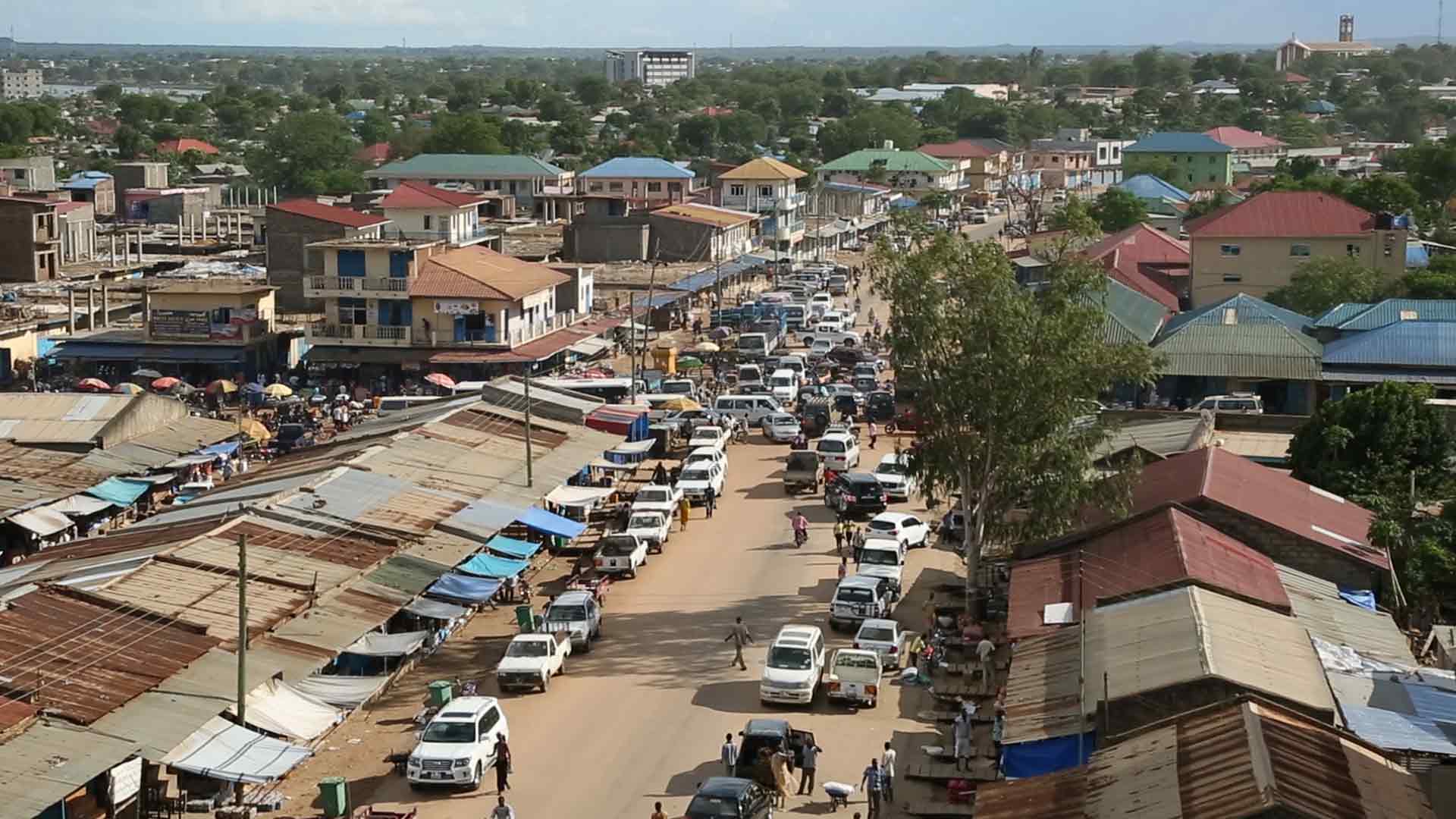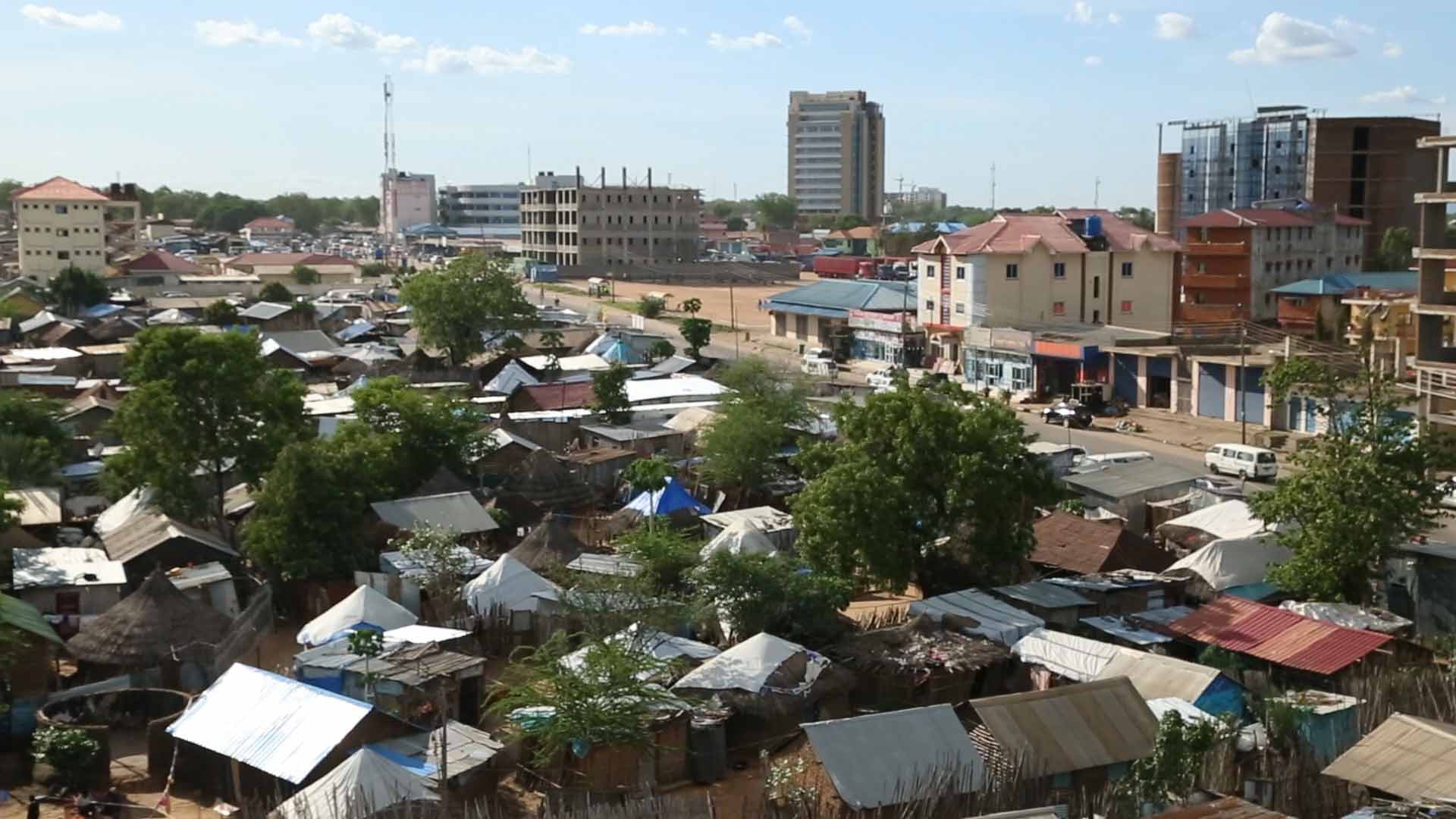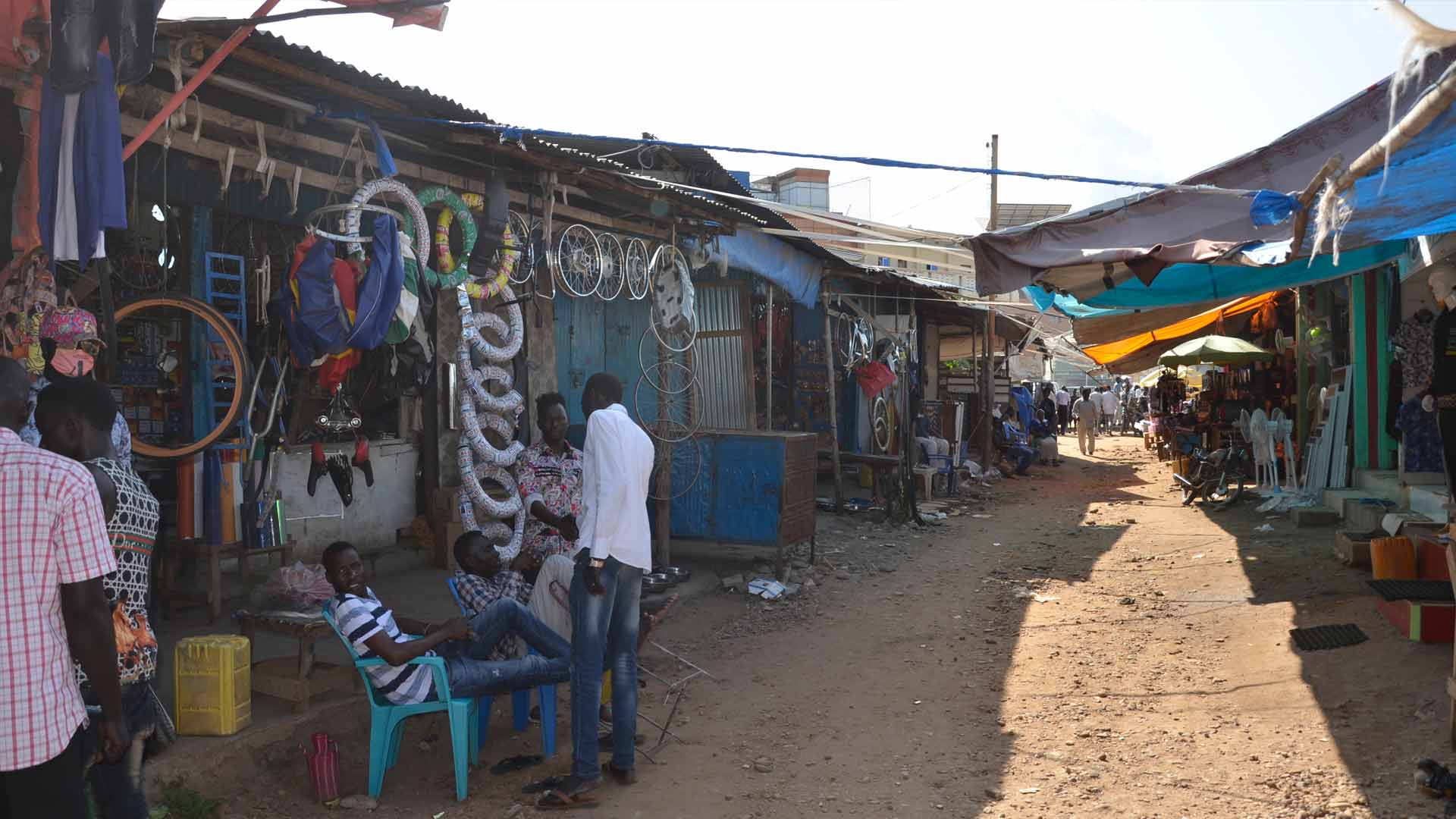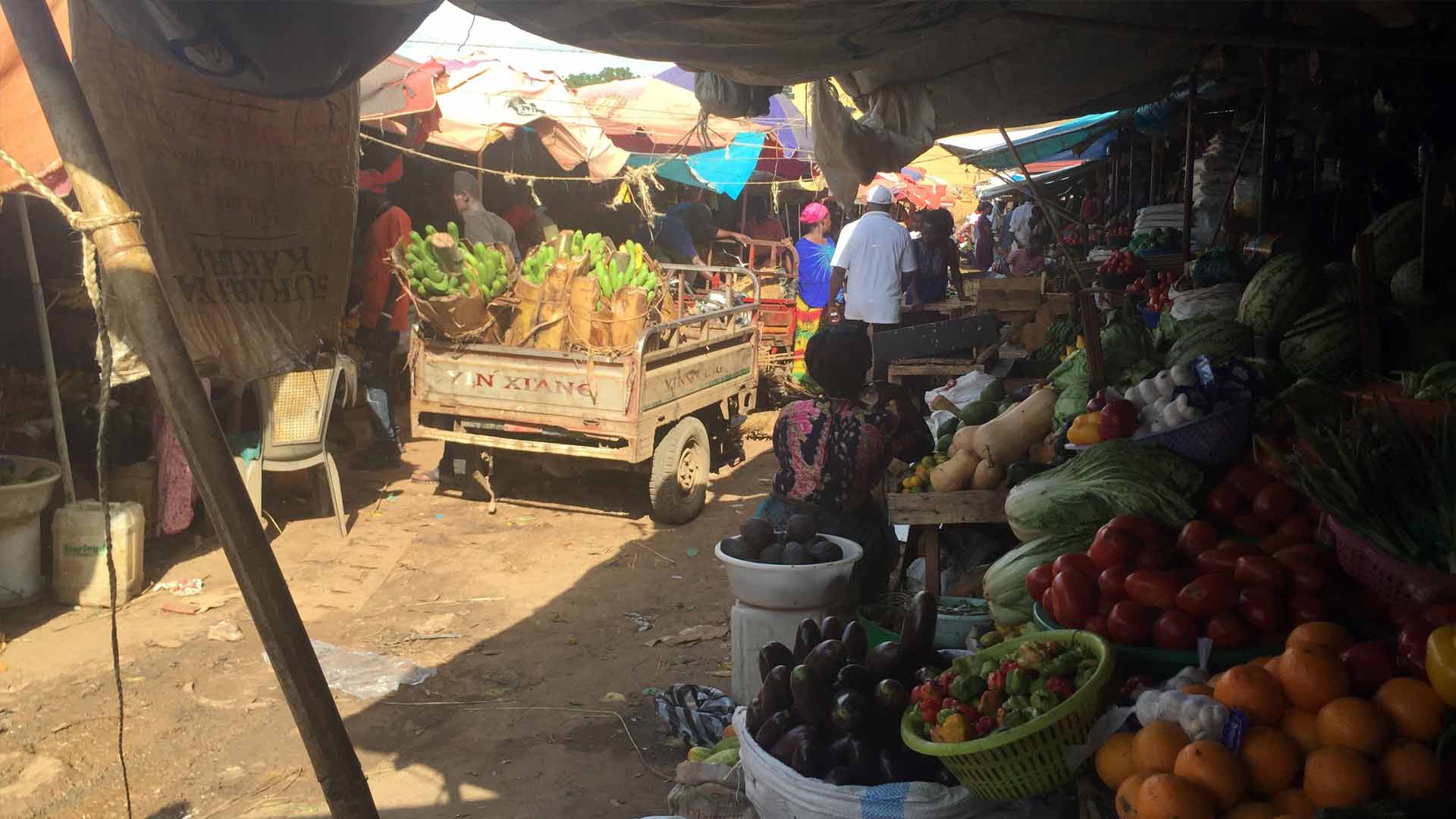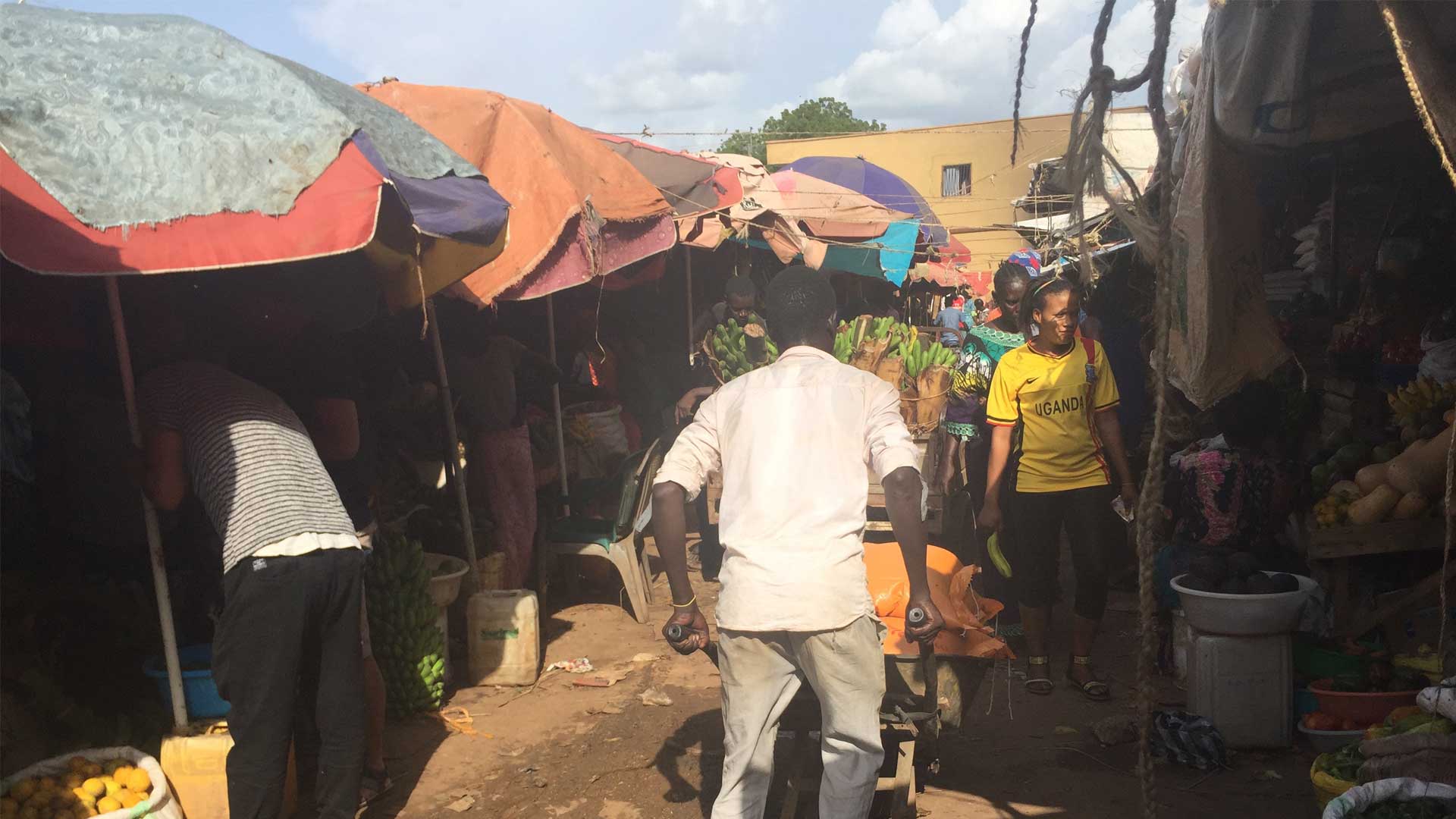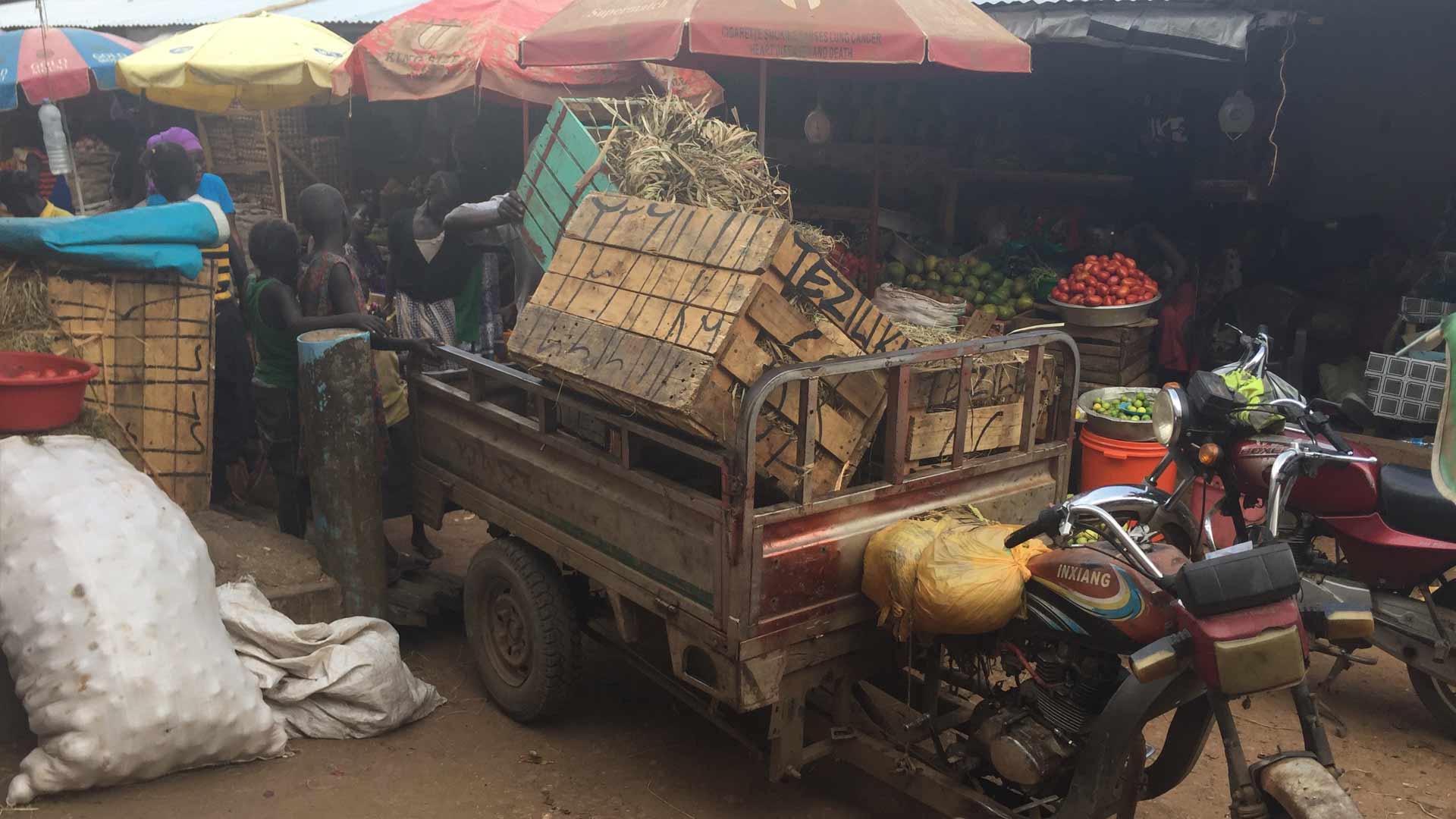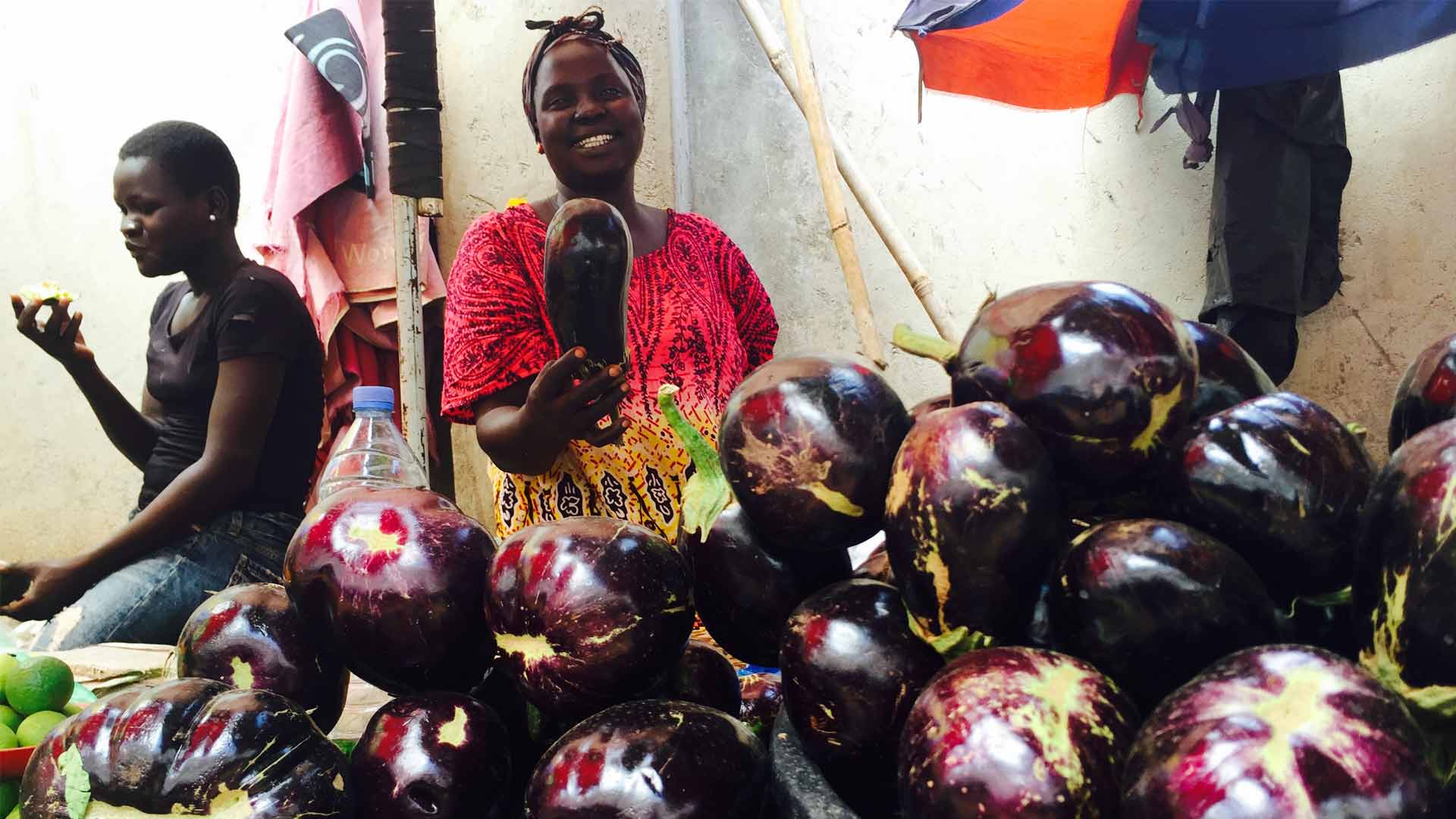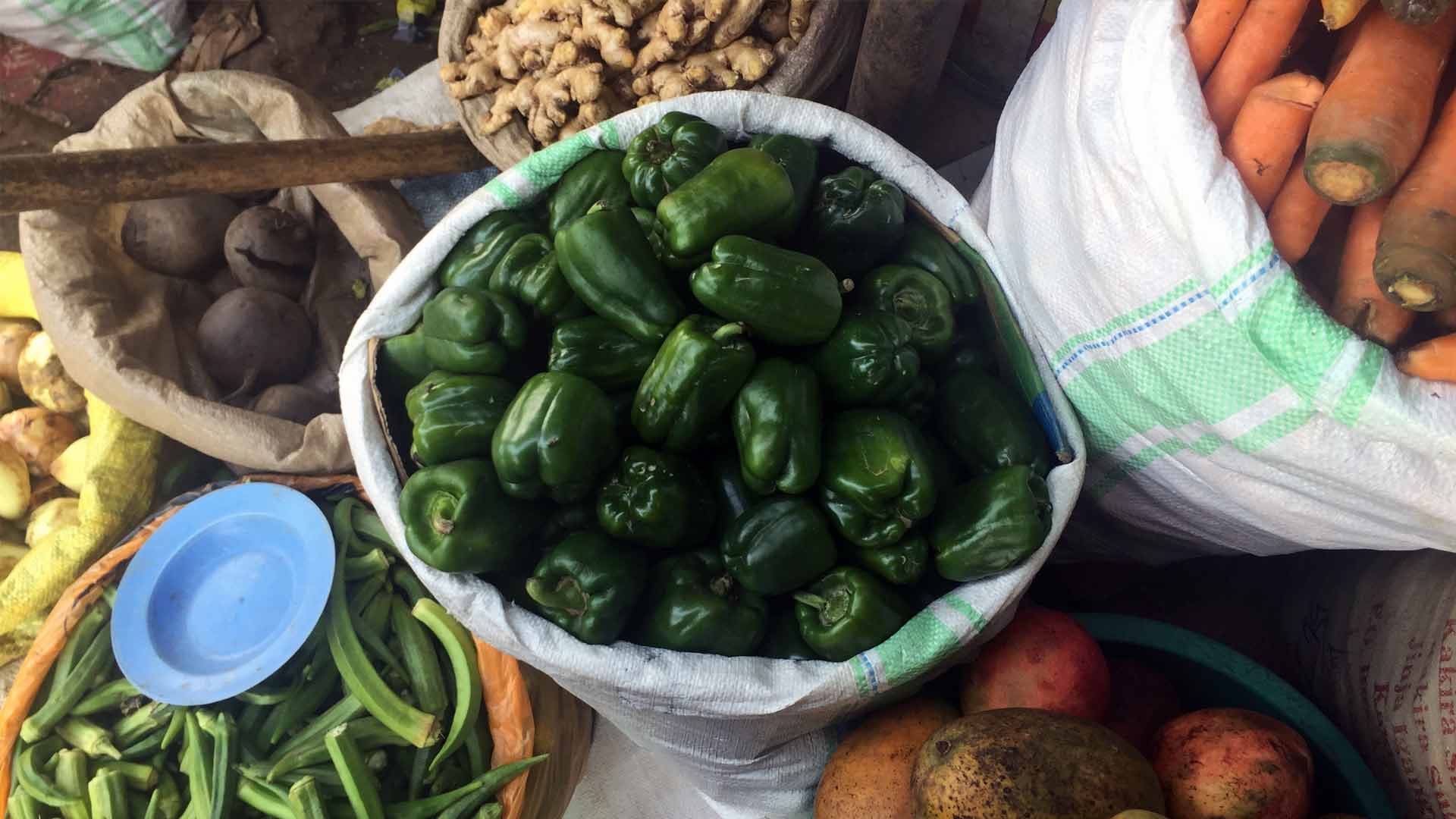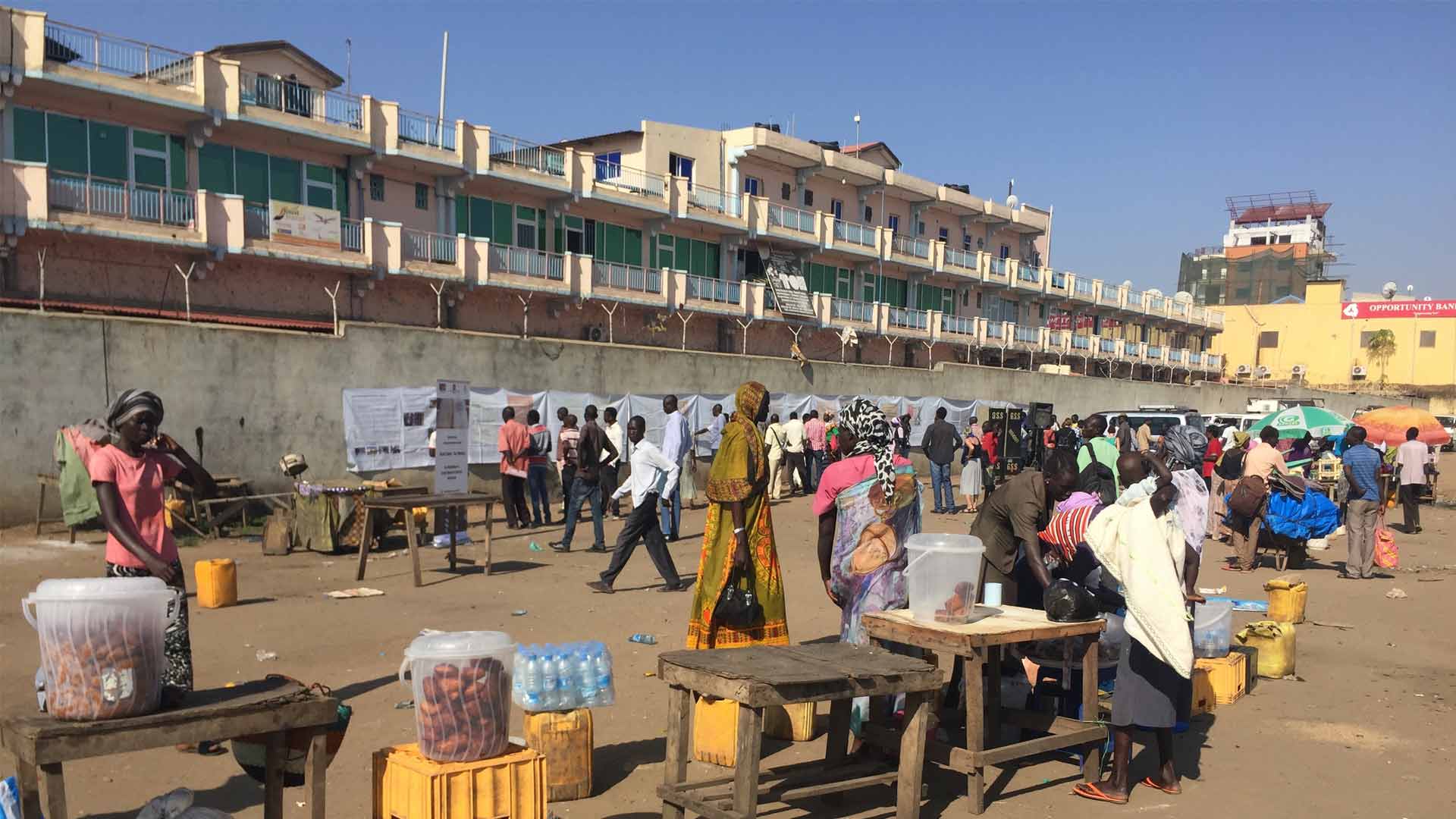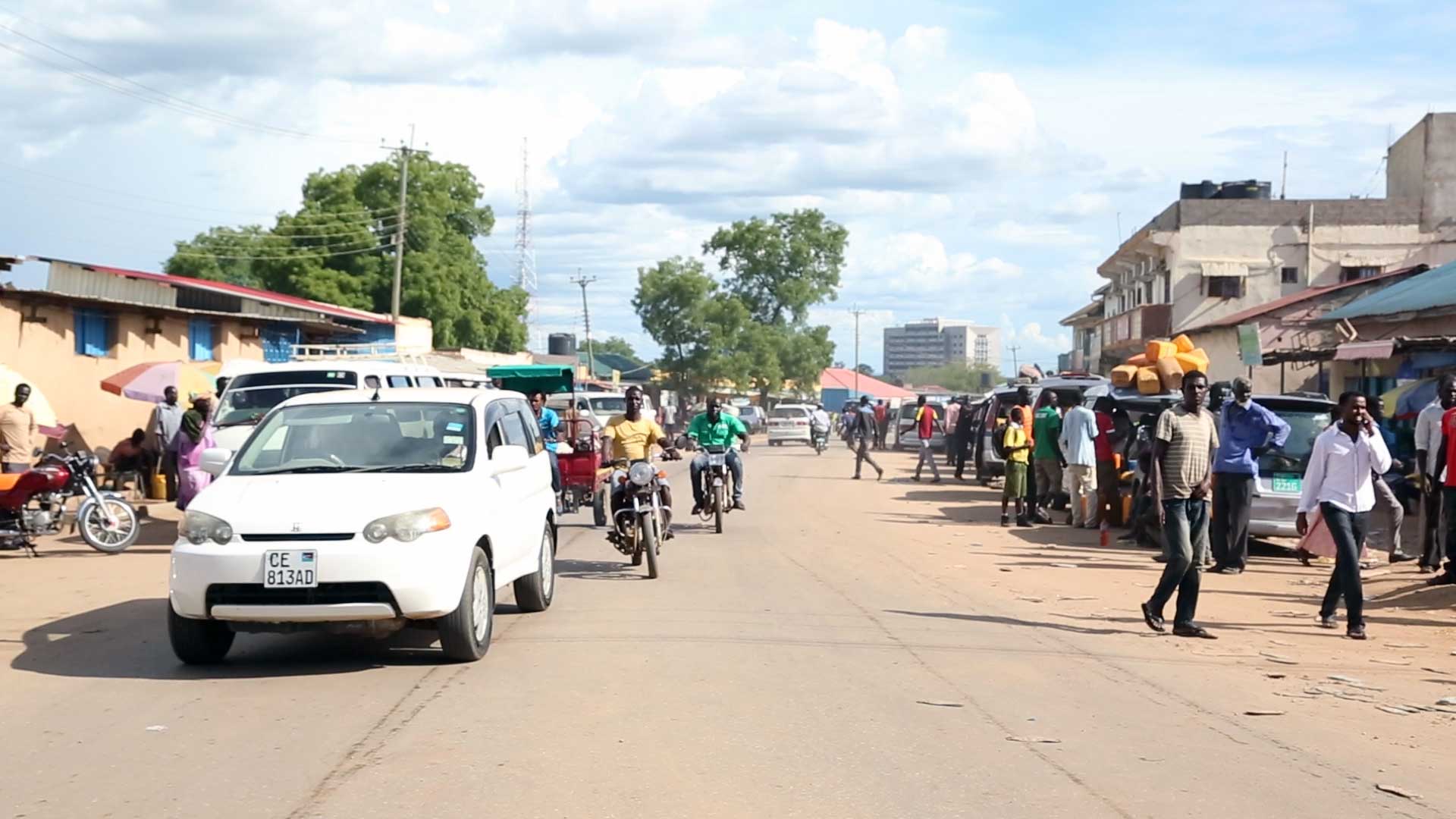Konyo Konyo Market
Konyo Konyo means “congested” or “mingling” in Juba Arabic. It is the main market of Juba, where thousands of residents purchase their daily food supplies, clothes, cooking utensils and many other items in a noisy and restless atmosphere. Except for the fruits and vegetables side of the market, Konyo Konyo shuts down abruptly every day at 5:00pm, when merchants pack up their stalls and lock up the doors of their shops. It didn’t use to be that way. The incidents of July 2016, when fighting and wide-scale looting occurred in the capital, have changed habits.
Before the arrival of many new residents in Juba throughout the 1970s, Konyo Konyo was called Bur Lo Tome, a Bari expression meaning “the stomach of the elephant”.
Until today, Konyo Konyo market is the place that feeds the city, one of abundance and fluctuating prices. Most items are imported from abroad and merchants blame it on the local currency’s weakness when they are accused of overcharging. Locally-grown agricultural products are available in the market, but most fresh fruits and vegetables are imported from Uganda by road. The steep decline of the South Sudanese Pound since the 2015 devaluation had the local prices skyrocket. The inflation rate had reached 334% over a period of two years in May 2017.
An exhibition of the South Sudan National Archives popped up one morning of November 2017. It distracted market-goers from their daily hassle and introduced them to historical records they didn’t know the existence of, bits of South Sudan’s history, their history.


